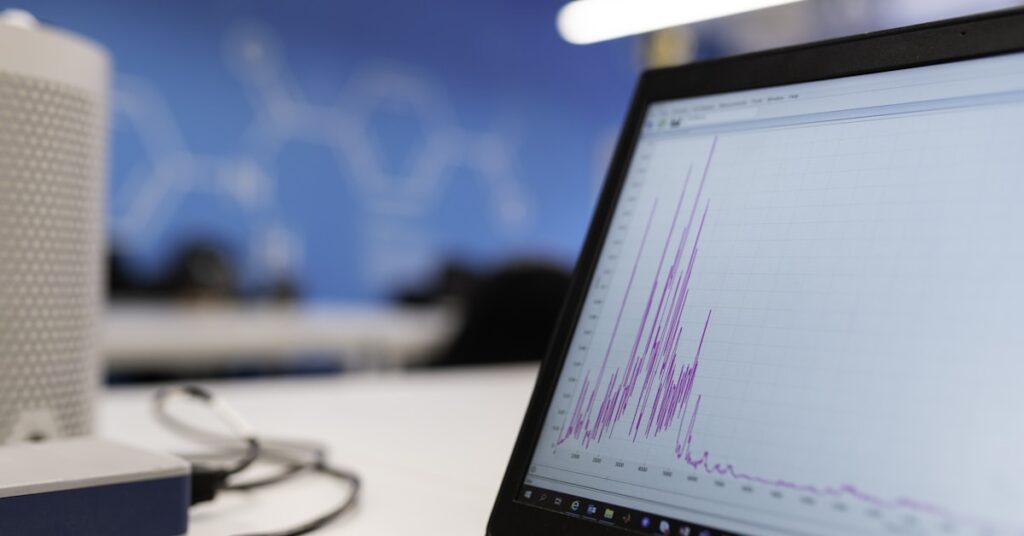Struggling to make sense of your data?
Your current tools are probably hitting their limits, turning complex datasets into overwhelming roadblocks instead of the clear, valuable insights your team needs.
This stalls your analytics, leaving your team unable to scale and deliver the actionable reports that stakeholders demand to see for business growth.
The pressure for a high ROI and efficient time-to-value is immense. Without the right software, you risk workflow disruption and falling behind competitors.
If you’re also streamlining your data pipelines, my article on best data mapping software covers essential tools.
The right platform changes this entirely. It helps you master your complex datasets and finally unlock the accelerated insights you’ve been chasing.
In this article, I’ll help you navigate the options. We’ll explore the best statistical analysis software designed to handle complexity and scale with your business.
You’ll find solutions that offer intuitive analytics, seamless integration, and empower your team to turn data into a real competitive advantage.
Let’s dive in.
Quick Summary:
| # | Software | Rating | Best For |
|---|---|---|---|
| 1 | IBM → | Enterprise-scale AI teams | |
| 2 | SAS → | Analytics managers at large firms | |
| 3 | JMP → | Growing mid-sized companies | |
| 4 | Minitab → | Analytics managers & data leads | |
| 5 | Stata → | Analytics managers & data leads |
1. IBM
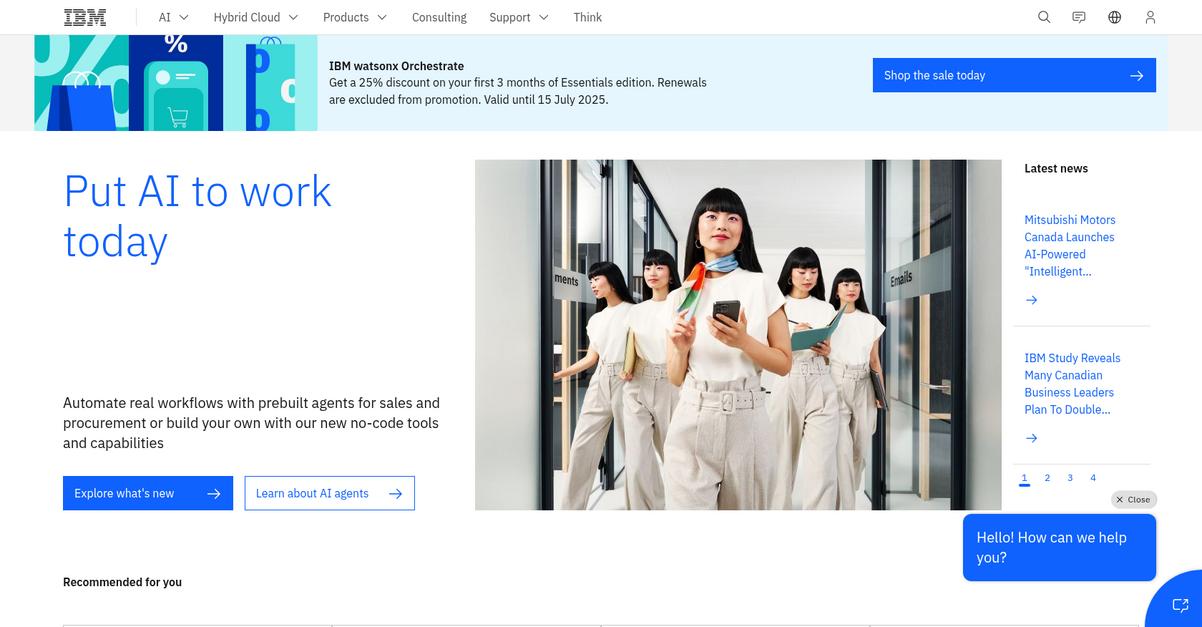
Struggling to transform complex data into actionable insights?
IBM offers AI-powered automation and no-code tools that streamline workflows, ensuring you gain clarity from your data quickly. This means you can easily build or use prebuilt AI agents for sales and procurement.
Here’s how you can shift from just exploring data to making profit-driven decisions, accelerating your insights, and boosting productivity. The result is seamless integration.
IBM helps you move beyond data overload.
Its AI technologies are built for business, helping you go from AI pilots to full production with ease. Additionally, you can start building with IBM Granite® models and explore AI courses, APIs, and datasets to enhance your team’s skills. You can also monitor agentic AI performance with watsonx.governance, ensuring control and security over your AI. Plus, you get cost-efficient AI models tailored for business and optimized for scale.
This ensures faster, data-driven decisions for your business.
Key features:
- AI-powered automation: Automate real workflows with prebuilt agents or build your own using new no-code tools and capabilities, streamlining complex data processes.
- Integrated governance: Monitor agentic AI performance with watsonx.governance to maintain control and security, ensuring your AI initiatives are compliant and effective.
- Scalable AI models: Get cost-efficient AI models specifically tailored for business needs and optimized for scale, allowing your analytical capabilities to grow with your company.
IBM features, pricing, & alternatives →
Verdict: IBM stands out as a top contender for the best statistical analysis software, offering solutions to turn AI projects into sustained financial returns. Its focus on AI-powered automation and robust governance helps your team achieve higher productivity and accelerated insights, directly addressing pain points like rigid legacy tools and complex datasets for modern data leads.
2. SAS
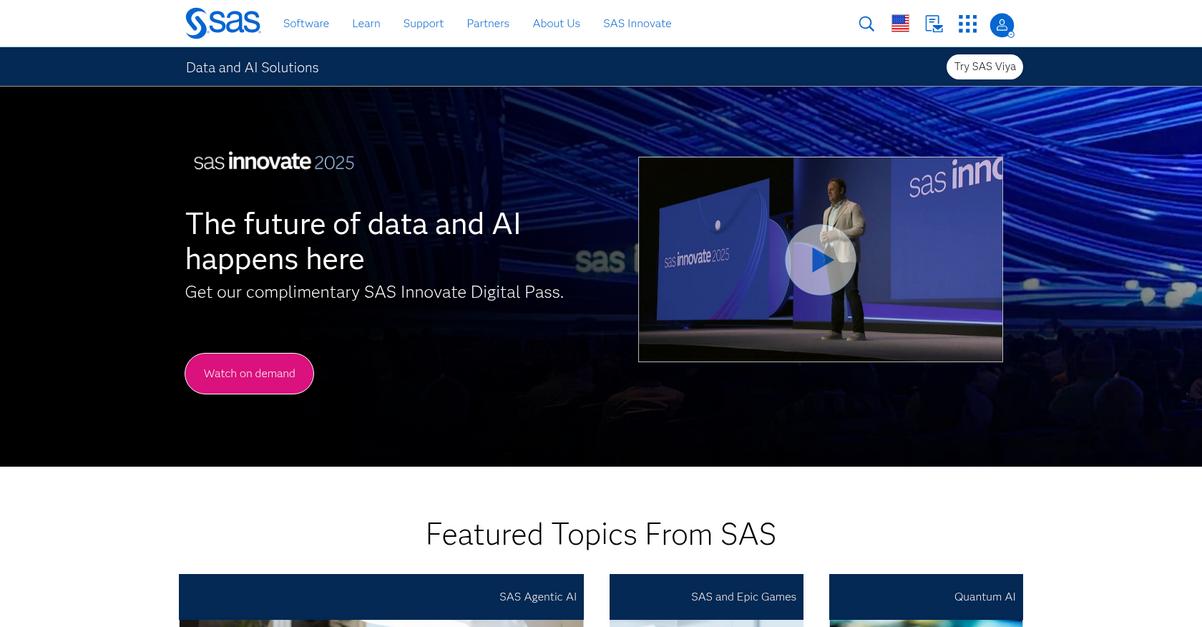
Struggling to make sense of your complex data?
SAS helps you connect data, use analytics, and deploy AI models. This means you can gain deeper insights and drive better business outcomes.
You need to leverage data and analytics to boost your competitive edge. SAS offers the solutions to help you unlock the full potential of your information and scale your operations.
Here’s how to simplify your data journey.
SAS provides solutions to help you discover new opportunities in your data and innovate faster. This gives your business a significant competitive advantage.
You can connect, explore, analyze, and visualize your data, turning raw information into actionable insights that drive smarter decisions. Additionally, it empowers your team to make data-driven decisions that propel your business forward.
Plus, you can manage your analytics and AI models with confidence, ensuring reliable and trustworthy results while enabling you to monitor performance and mitigate risks efficiently. The result is accelerated insights and higher productivity for your team.
While we’re discussing data insights, my guide on product analytics software can help you uncover user behavior.
Key features:
- Connect data and use analytics: Easily integrate diverse data sources and apply advanced analytical techniques to uncover valuable patterns and trends.
- Deploy AI models: Operationalize your AI and machine learning models directly within your workflows, ensuring they deliver consistent, impactful results.
- Innovate faster: Accelerate your research and development cycles by quickly testing hypotheses and building robust analytical solutions.
SAS features, pricing, & alternatives →
Verdict: For analytics managers and data leads seeking to overcome rigid legacy tools and scale their operations, SAS stands out as the best statistical analysis software. Its robust capabilities for data connection, AI model deployment, and rapid innovation empower teams to achieve faster insights and higher productivity, directly supporting business growth.
3. JMP
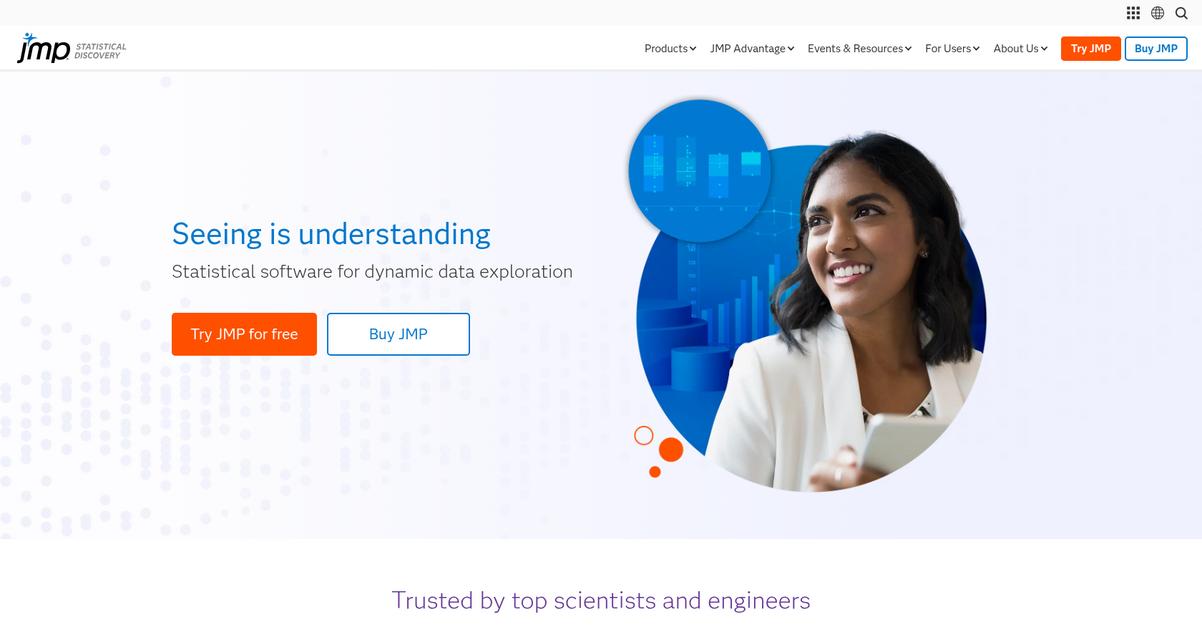
Struggling with data overload and complex analysis?
JMP offers dynamic data exploration and an extensive suite of analytic platforms to help you easily access and import data.
This means you can tackle problems of any size and accelerate process improvement, saving time and effort while getting more from your investment without increasing headcount.
Here’s how JMP simplifies your workflow.
JMP helps you quickly analyze and share your discoveries within one platform, removing barriers and complexity. This means you can boost reproducibility and get to market faster by automating repeat analyses, with no coding required. You can also eliminate the need for multiple tools that solve the same problems, increasing efficiency. This comprehensive approach supports interactive innovation, predictive analytics, clinical data analysis, and collaborative knowledge sharing.
Ultimately, you gain competitive advantage through accelerated insights.
If you’re also looking into seamless data flow, my article on application integration tools covers how to connect easily.
Key features:
- Easy Data Access: Import data from various sources and share discoveries within a single, integrated platform, streamlining your entire analytical workflow.
- Comprehensive Analytics: Utilize an extensive suite of analytic platforms to tackle complex problems of any size, empowering you to make data-driven decisions confidently.
- Automated Reproducibility: Boost reproducibility and reduce variation by automating repeat analyses without coding, accelerating process improvement and time to market.
JMP features, pricing, & alternatives →
Verdict: JMP empowers you to master complex data and scale your analytics efforts efficiently, making it the best statistical analysis software for growing companies. It eliminates workflow disruption and ensures actionable reporting, as seen by its adoption by 100% of the world’s 10 largest pharmaceutical, chemical, and semiconductor companies.
4. Minitab

Struggling to make sense of complex business data?
Minitab offers Solutions Analytics, empowering you to unlock your data’s full potential.
This powerful software lets you make data-driven decisions faster, transforming raw numbers into actionable insights.
It’s time to truly understand your data.
Minitab’s market-leading products include powerful statistical software accessible anywhere, anytime on the cloud. This means you can solve your toughest business challenges, leveraging capabilities like analytics dashboards, machine learning, and visualizations. You can also start, track, manage, and share improvement initiatives to achieve business excellence with leading CI and innovation tools.
Additionally, Minitab provides specialized solutions such as Minitab Engage for customizable workflows and KPI dashboards, and Minitab Solution Center for integrated data-driven problem solving. This comprehensive ecosystem ensures that business intelligence specialists can accelerate insights and boost productivity, supporting continuous improvement within your organization.
The result is accelerated insights and higher productivity.
While we’re discussing business excellence, my article on vendors management software can simplify your selection and drive operational gains.
Key features:
- Powerful statistical platform: Access best-in-class statistical software from anywhere, anytime, allowing you to solve your most challenging business problems efficiently.
- Integrated Solutions Ecosystem: Utilize the Minitab Solution Center for data-driven problem-solving, combining various tools like analytics dashboards and machine learning for comprehensive insights.
- Improvement Initiative Management: Leverage Minitab Engage to start, track, manage, and share continuous improvement initiatives with customizable workflows and KPI dashboards.
Minitab features, pricing, & alternatives →
Verdict: Minitab stands out as a leading contender for the best statistical analysis software, offering powerful tools for data-driven decisions. Its comprehensive Solutions Analytics, accessible on the cloud, allows analytics managers and data leads to gain valuable insights, as demonstrated by customer stories like Takeda boosting drug production and a solar company increasing revenue.
5. Stata

Struggling with rigid legacy statistical analysis tools?
Stata offers an intuitive platform with powerful statistics and visualization, perfect for your complex data. This means you can easily master complex data and scale.
It delivers everything you need for reproducible data analysis in one intuitive platform, addressing your need for reliable and efficient tools. Plus, it simplifies your analysis workflow.
This means a complete solution for you.
Stata is designed to tackle challenges like information overload and comparing complex platforms, providing a comprehensive suite of tools. This platform eliminates hidden costs and extra modules, offering robust features for statistical analysis, intuitive data visualization, efficient data management, and automated reporting. You can confidently fit models, evaluate assumptions, and interpret results, thanks to features like linear and logistic regression, time-series, and machine learning.
It helps you prepare your data with confidence, even with large datasets, ensuring your analysis is always based on clean, reliable information. Additionally, its automated reporting feature allows seamless exports to various formats like Word, Excel, PDF, HTML, generating dynamic reports that update as your data changes, ensuring transparency and reproducibility for all your stakeholders and budget approvers.
The result is accelerated insights and higher productivity for your team.
While we’re discussing optimizing workflows and productivity, my article on best office management software might also be helpful.
Key features:
- Reproducible data analysis: Provides powerful statistics, visualization, data manipulation, and automated reporting all in one intuitive platform for reliable results.
- Comprehensive statistical tools: Offers features like machine learning (via H2O, CATE, HDFE), causal inference, Bayesian analysis, and advanced regression models for diverse research questions.
- Automated reporting and data management: Enables seamless export to various formats and efficient handling of large datasets, missing values, and time-series structures.
Stata features, pricing, & alternatives →
Verdict: Stata stands out as a leading contender for the best statistical analysis software, providing a unified platform for powerful analysis and reproducible workflows. Its comprehensive features, from machine learning to automated reporting and robust data management, address key pain points for analytics managers and data leads, ensuring accurate insights and streamlined operations.
6. Tableau

Struggling to make sense of your complex data?
Tableau helps you turn raw data into actionable insights through its visual analytics platform. This means you can ask questions directly from your data without getting bogged down in complicated software.
Tableau’s intuitive products, including Tableau Desktop and Tableau Cloud, offer built-in visual best practices, enabling limitless data exploration without interrupting your analysis flow. This ensures a smooth journey from raw data to clear, understandable visualizations.
This leads to faster, trusted insights.
You can deploy Tableau in the cloud, on-premises, or integrate it natively with Salesforce CRM, giving you flexibility. It connects to all your data sources and includes fully integrated AI/ML capabilities and robust data governance.
Plus, with Tableau Next, you unlock agentic analytics, delivering trusted insights and enriching agents with conversational AI. This helps you breeze through data preparation and create visualizations faster. Tableau helps organizations accelerate innovation and improve operations, ensuring your investment truly delivers value.
The result is data-driven decisions for everyone.
Speaking of specialized data management, my guide on best nutritionist software helps unify your client data and empower your team.
Key features:
- Agentic Analytics: Accelerate your journey from data to action with AI-powered insights, turning complex data into clear visualizations effortlessly.
- Visual Analytics Platform: See, understand, and act on data through an intuitive interface that transforms how you solve problems with built-in visual best practices.
- Integrated AI/ML Capabilities: Enhance your data analysis with powerful AI and machine learning features, providing deeper insights and automating complex tasks for better decision-making.
Tableau features, pricing, & alternatives →
Verdict: For analytics managers, data leads, and BI specialists aiming to scale their insights, Tableau stands out as the best statistical analysis software. Its intuitive visual platform, AI-powered analytics, and robust integration capabilities, as shown by customers like JLR delivering £250M in business value, ensure accelerated insights and higher productivity for your team.
7. Qlik
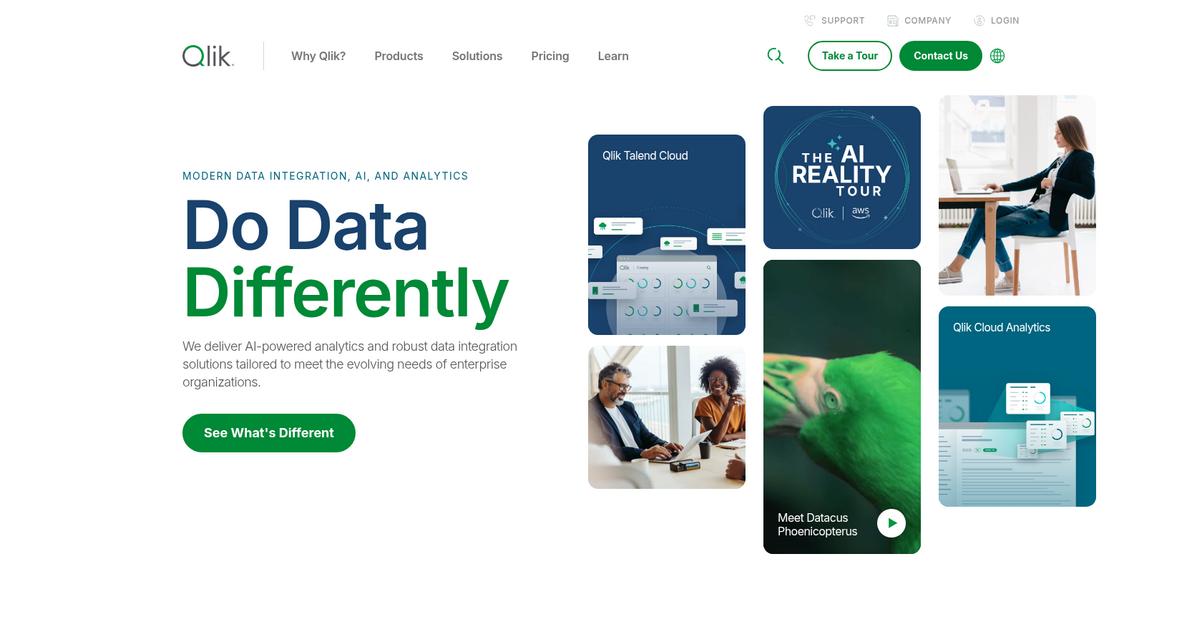
Struggling with data, feeling overwhelmed by complexity?
Qlik Sense can help you unify data, analyze it, and act, bringing clarity to your business.
This means you can discover hidden insights and solve your toughest problems with your data.
Here’s how you can achieve this.
Qlik Sense helps you see the whole story in your data through powerful analytics.
You can connect data from any source, allowing you to explore freely and uncover new connections. This ensures you’re always making decisions based on complete information.
Additionally, you can scale to serve everyone, from individuals to your largest enterprise, fostering data literacy across your organization. This makes your team more productive and insightful.
Unlock your data’s full potential.
While we’re discussing business efficiency, understanding customer self service software is equally important for streamlining operations.
If you’re also looking into ways to simplify HR and boost team satisfaction, my guide on employee self service software covers essential solutions.
Key features:
- Unified Data Analytics: Connect, analyze, and act on all your data to reveal the full story hidden within.
- Freeform Data Exploration: Empower your team to explore data freely, uncover new connections, and discover hidden insights without limitations.
- Scalable Enterprise Solutions: Grow your data analytics capabilities from individual users to large enterprises, ensuring data literacy across your entire organization.
Qlik features, pricing, & alternatives →
Verdict: If you’re seeking the best statistical analysis software that empowers your team with deep insights and scales with your business needs, Qlik Sense provides a powerful solution. Its ability to unify data and facilitate freeform exploration helps you master complex data and make informed decisions faster.
8. TIBCO

Struggling with data overload and slow insights?
TIBCO’s platform offers robust capabilities like integration and event processing. This means you can connect disparate data sources and react to events in real time.
You can streamline operations and accelerate development with a unified offering. This allows you to avoid silos and manage data assets efficiently.
Get real-time insights, right now.
TIBCO helps your business capitalize on data in real time, making it readily available for analysis. This empowers you to build and deploy enterprise solutions with high performance and reliability.
Their platform offers flexible deployment options, whether you prefer public, private, on-premises, or edge cloud. This means you get to choose the environment that best fits your needs, ensuring accessibility from anywhere. Additionally, TIBCO simplifies API management, accelerating digital transformation and enhancing business agility through real-time data synchronization.
Your potential is truly unlocked.
Key features:
- Real-time data processing: Enables your business to capitalize on data as it’s created, making it immediately available for applications and analytics.
- Flexible deployment options: Offers a wide range of technology and deployment choices including public, private, on-premises, or edge cloud environments.
- Unified platform experience: Streamlines operations and development by bringing together TIBCO technologies into a single offering for operators, architects, and developers.
TIBCO features, pricing, & alternatives →
Verdict: TIBCO provides a powerful, real-time data platform essential for any business seeking the best statistical analysis software. Its ability to simplify API management, accelerate claims processing by 50%, and enable real-time data capitalization makes it ideal for achieving rapid insights and operational efficiency.
Conclusion
Making sense of your data is hard.
Choosing the right platform feels overwhelming. You need a tool that turns complex datasets into the clear, actionable insights your team can actually use.
The right tool is a game-changer. Companies adopting solution-focused tools see a 31% productivity boost from better data interpretation. This frees your team to focus on delivering real, measurable business value.
So what’s the best choice here?
From my review, IBM stands out. Its AI-powered automation transforms complex data into the profit-driven insights your growing business needs to scale effectively.
Its prebuilt AI agents and no-code tools simplify workflows. I believe it’s the best statistical analysis software for teams needing to deliver measurable business impact, fast.
I suggest you start a free trial of IBM to see how its powerful AI can immediately transform your team’s entire analytics workflow.
You’ll make smarter decisions, faster.
